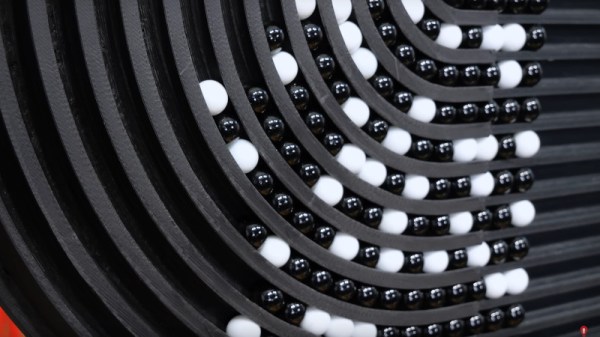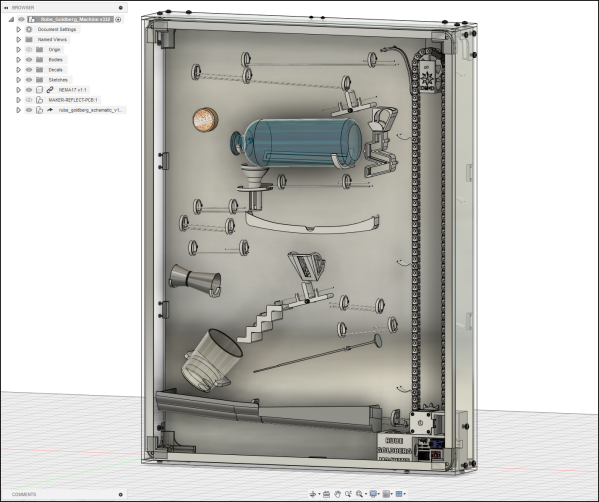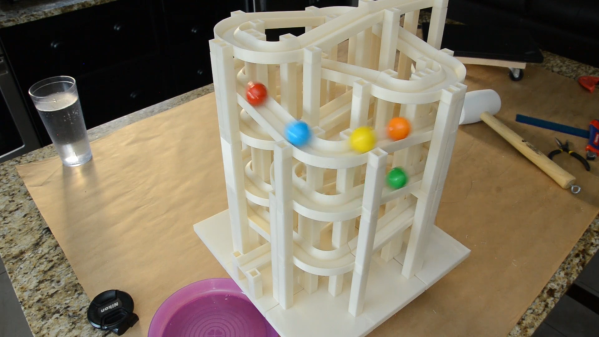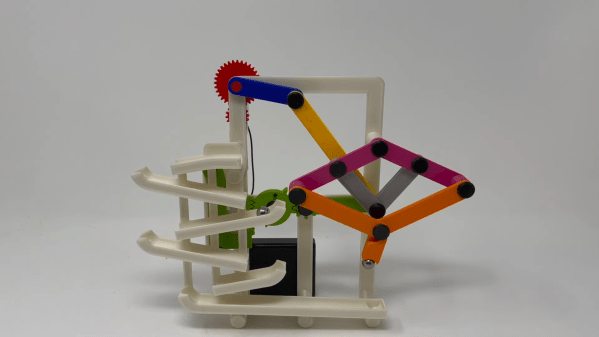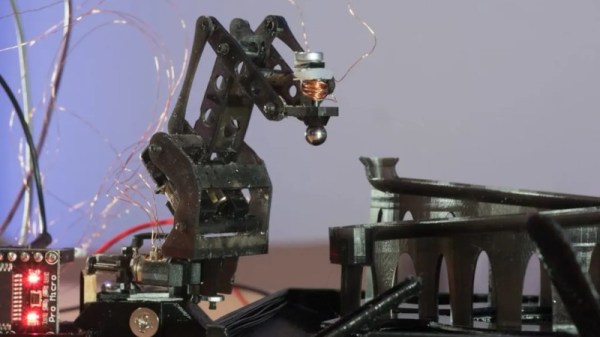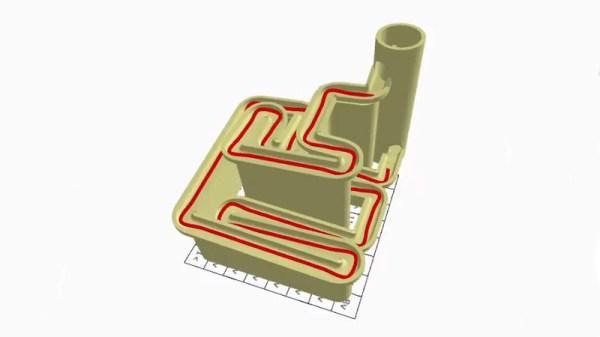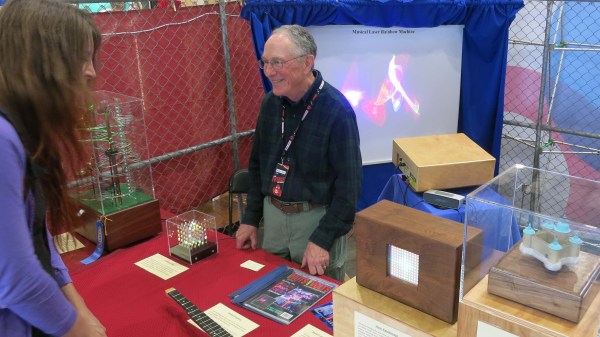The astonishing variety of ways to tell the time which have appeared on these pages over the years provides a showcase of the talents and ingenuity of our community. Many clocks use designs we are familiar with, but every now and then along comes a clock that rings something new. So it is with [Ivan Miranda]’s latest work — a digital clock that shows the time with a dot matrix made of marbles. So far he’s published only part one of what will become a series. There’s technically no clock yet, but as it stands it’s enough of a marble machine to be a worthy project in its own right.
In the video below we see him solving the problems of creating free-running marble transport and handling via a conveyor belt, and solving such unexpected problems as cleanly releasing them from the belt, holding a row of marbles with a solenoid, and catching errant marbles that bounce free of the machine. The result is a rather pretty marble machine that makes an endless cascade of falling marbles on a curved track. We’re guessing that future videos will deal with the assembly of lines for the dot matrix display, such that the figures of the clock will be formed from black and white marbles, so this is a series to watch out for.
We’ve seen [Ivan]’s work in the past, not least for his giant 3D printer.

